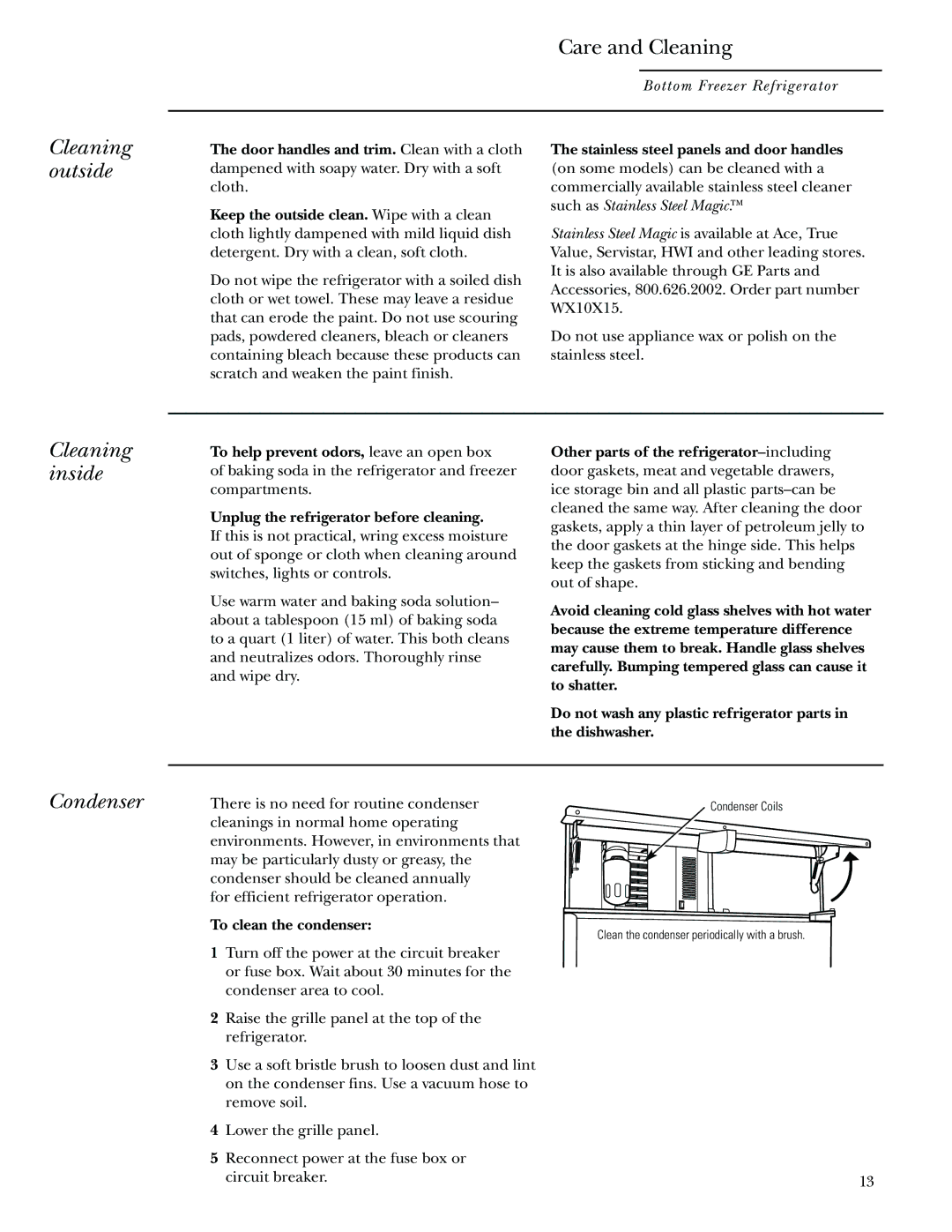Bottom-Freezer Built-In Refrigerators specifications
When it comes to luxury kitchen appliances, GE Monogram Bottom-Freezer Built-In Refrigerators stand out for their design, functionality, and advanced technology. These refrigerators are meticulously crafted not only to enhance your kitchen’s aesthetics but also to provide superior food preservation capabilities tailored for the discerning chef.One of the primary features of GE Monogram refrigerators is their elegant built-in design, which allows for seamless integration into your cabinetry. This creates a cohesive look in your kitchen, making it appear more spacious and streamlined. The stainless steel finish offers a modern touch, while the customizable panel options allow homeowners to match the refrigerator to their specific kitchen décor.
The bottom-freezer layout is another highlight, as it places frequently used fresh food items at eye level. This design reduces the need to bend down to access your groceries, enhancing convenience. The spacious freezer compartment, located at the bottom, provides ample storage for frozen goods, making organization easy with adjustable shelves and baskets.
In terms of technology, GE Monogram refrigerators come equipped with advanced cooling systems. The precise temperature control technology ensures that both refrigerator and freezer sections maintain the ideal temperature, preserving the freshness of your food. The dual evaporator system is particularly noteworthy, as it prevents odor transfer between the refrigerator and freezer compartments, ensuring that your ice cream stays tasting like ice cream and not like last week’s fish dinner.
Another standout characteristic is the ultra-quiet operation. The refrigerators incorporate sound-absorbing materials and a reliable compressor, making them some of the quietest appliances in their class — perfect for open-concept living spaces where enjoyment of both functionality and ambiance is essential.
LED lighting illuminates the interior, making it easy to find what you need while reducing energy consumption compared to traditional bulb options. The slide-out shelves and adjustable bins offer versatility, allowing users to customize their storage solutions based on personal needs or large grocery loads.
With smart technology options, select models can be integrated into your home network, allowing remote monitoring and control from your smartphone. This feature not only enhances convenience but also aids in efficient energy management.
In summary, GE Monogram Bottom-Freezer Built-In Refrigerators blend style, innovation, and practicality, making them an excellent choice for those seeking a high-end appliance that enhances their culinary space while providing unparalleled food storage solutions.

